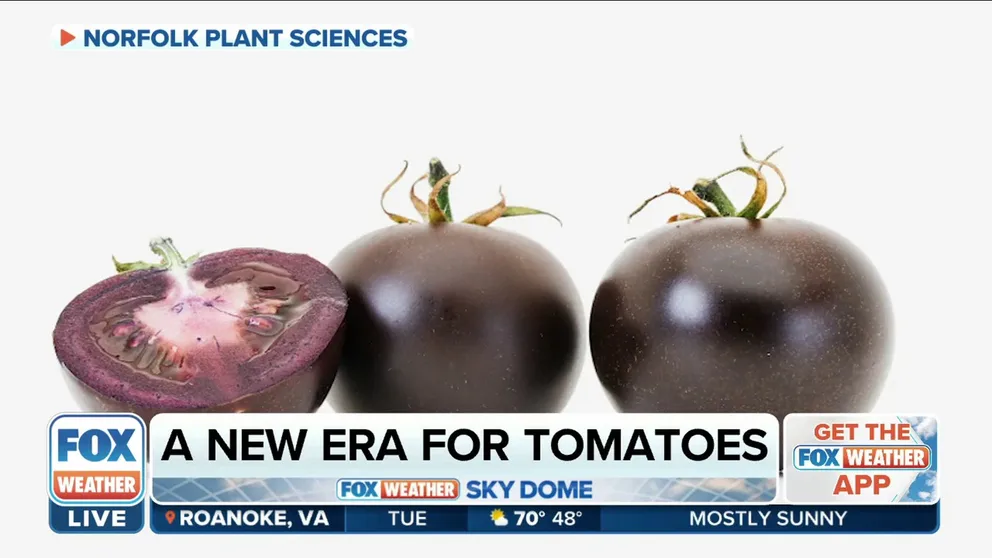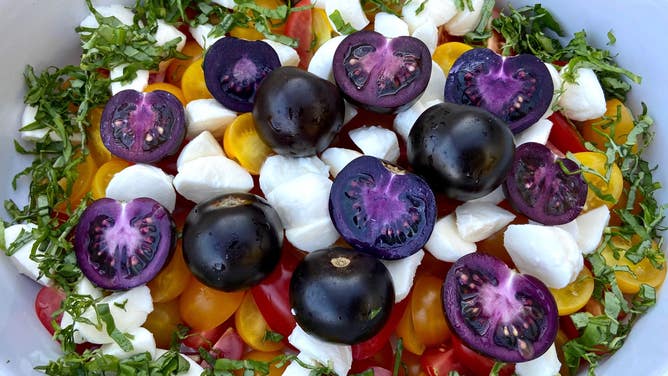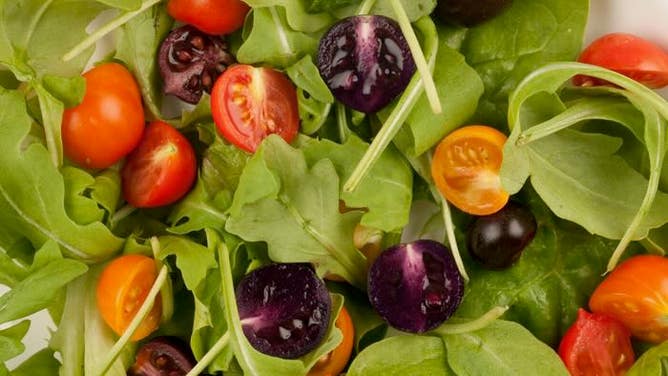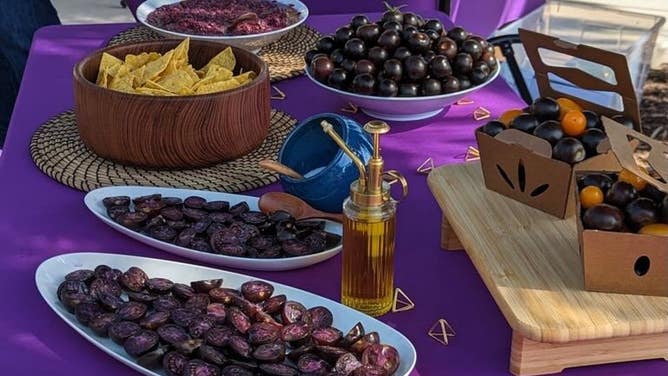Scientists turn tomatoes purple to make them more nutritious
Purple tomatoes will become available in select grocery stores for the first time starting in late spring and early summer. Gardeners can purchase seeds now.
New era for tomatoes: Exploring benefits of the purple tomato
Nathan Pumplin, President and CEO for Norfolk Healthy Produce, explains more about the genetically modified purple tomato.
Move aside, blackberries and grapes. One of the most vibrant violet plants in the produce aisle, garden and salads will soon be the purple tomato.
About the size and shape of a cherry tomato, the new tomato is a dark, gothic purple on the outside and showcases shades ranging from lavender to royal purple on the inside.
This pageantry of purples is more than just for show. The color is indicative of the nutritional value of the purple tomato and the science behind its creation.
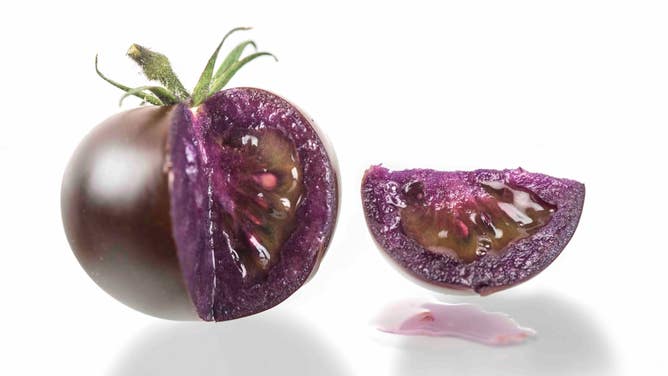
The Purple Tomato.
(Norfolk Healthy Produce / FOX Weather)
The purple tomato was developed by professor and founder of Norfolk Healthy Produce Cathie Martin. According to Norfolk Healthy Produce CEO Nathan Pumplin, Martin was looking for ways to improve the nutrition and health attributes of foods, such as tomatoes.
THE DOS AND DON'TS OF PLANTING TOMATOES
Martin discovered that by combining genes from the snapdragon, an edible flower, with the tomato, a purple pigment and additional nutrients are produced in the tomato fruit.
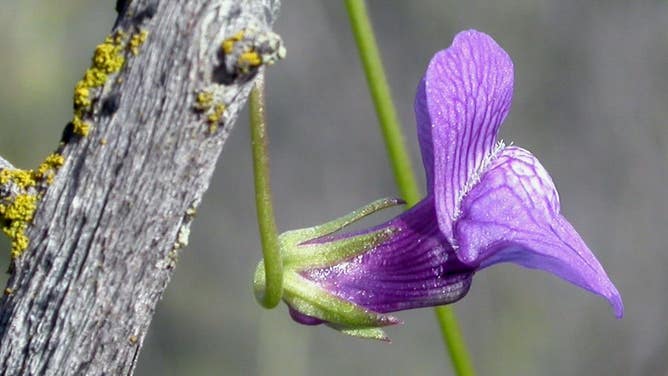
Antirrhinum kelloggii, one variety of snapdragon.
(Keir Morse / NPS / FOX Weather)
The nutrients are known as anthocyanins, which are antioxidants found in blackberries, grapes, eggplants and other purple fruits and vegetables, Pumplin said. It is these nutrients that give certain plants their striking color.
Additionally, he noted that these antioxidants provide a variety of health benefits, such as anti-cancer and anti-flammatory properties, and aid in heart, lung and neurological health.
"The purple tomato is extremely special because it fits in our conversation right now about health and nutrition, about how important it is to improve the diet of everybody in the world, especially people in the U.S.," Pumplin said. "I think it's great for us to think about how we get more nutrition and the choices that we make around food."
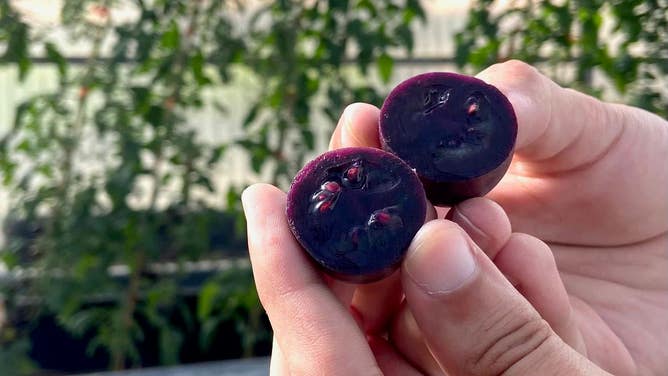
The Purple Tomato.
(Norfolk Healthy Produce / FOX Weather)
Despite the benefits of anthocyanins, most Americans do not consume enough of them. Pumplin said the average American eats about 12 mg per day, when they should be eating 10-20 times the amount. This amount is equivalent to a single serving of blueberries, but most people do not eat that many blueberries.
EL NINO SLASHES WORLD BLUEBERRY CROP LEADING TO SKYROCKETING SUPERMARKET PRICES
This nutrient deficiency in the American diet is one of the reasons why Martin and her team selected the tomato for development.

Trays of purple tomatoes.
(Norfolk Healthy Produce / FOX Weather)
According to Pumplin, Americans eat 20 times more tomatoes than they eat blueberries. This presented an opportunity for a genetic crossover between tomatoes and purple-blue fruits and vegetables.
"This is really an excellent way to get more anthocyanins, more of these purple antioxidants, into your diet every day," he said.
And of course, the million-dollar question: How does it taste?
Much like a cherry tomato, according to Pumplin.
"We really love the flavor," he said. "It's pretty low on acid, and so you get a very umami, a very savory, earthy kind of tomato flavor."
Purple tomatoes will become available in select grocery stores for the first time starting in late spring and early summer.
For people interested in testing their green thumbs when growing the purple fruit, seeds can now be purchased on the Norfolk Healthy Produce website.
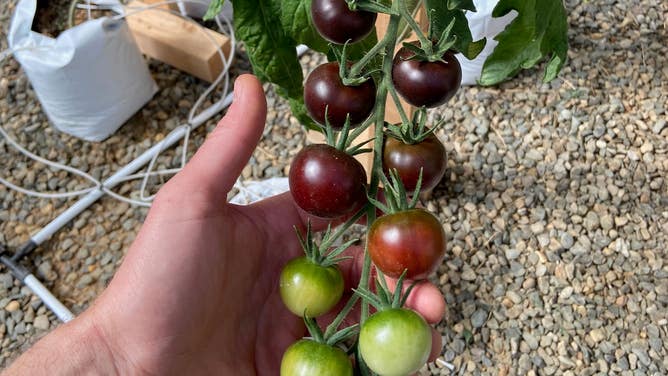
Purple tomatoes ripening on the vine.
(Norfolk Healthy Produce / FOX Weather)
Growing the purple tomato plant has been tested throughout the U.S., from California to Connecticut, Pumplin said.
NEW PLANT HARDINESS ZONE RELEASED BY THE USDA
"They've done extremely well. They're very hardy plants. They're very vigorous," he noted. "Really, they're just a tomato like any other tomato. So even though the fruit is purple, they're no different from other indeterminate tomatoes that growers will grow in their garden."
